 W
WEliza Allen was a Maine woman who, in 1851, published a memoir called The Female Volunteer; Or the Life and Wonderful Adventures of Miss Eliza Allen, A Young Lady of Eastport, Maine. In it, she described her life. As a teenager, she was not allowed to marry the man whom she loved, and so as a result, she disguised herself as a man and had many adventures, including fighting and being wounded in the Mexican–American War. She was also known as Eliza Billings.
 W
WGiuseppa Bolognara Calcagno, better known as Peppa la cannoniera , in Sicilian: Peppa a cannunera,, was an Italian patriot.
 W
WRenée Bordereau, nicknamed The Angevin, was a French woman who followed her father, disguised herself as a man, and fought as a Royalist cavalier in the troops of Charles Melchior Artus de Bonchamps during the Vendéan insurrection against the French Revolution and took part in all battles of the war.
 W
WLucy Brewer is the pen name of a writer who purported to be the first woman in the United States Marines, serving aboard USS Constitution as a sharpshooter. Brewer's adventures were probably written by Nathaniel Hill Wright (1787–1824) or Wright's publisher, Nathaniel Coverly.
 W
WMarie-Angélique Josèphe Brûlon, née Duchemin, was a French soldier.
 W
WHazel Carter, was a stowaway and writer from Douglas, Arizona. During World War I, she stowed away on a ship to France to stay with her soldier husband, Corporal John J. Carter. Later, she wrote about her experience for the Bell Syndicate.
 W
WCatarina Lopes (16th-century) was a Portuguese soldier, she fought alongside other men and women soldiers in the Siege of Diu. She is known for forming a group of combatants to fight for Portuguese Empire against Sultanate of Gujarat and Ottoman Empire.
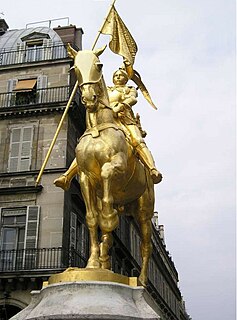 W
WJoan of Arc, a French historical figure executed by the English for heresy in 1431, is a national heroine of France and a Roman Catholic saint. Joan accompanied an army during the Hundred Years War, adopting the clothing of a soldier, which ultimately provided a pretense for her conviction and execution. Whether her crossdressing and lifestyle have implications for her sexuality or gender identity is debated.
 W
WChristian Davies, born Christian Cavanagh also known as Kit Cavanagh or Mother Ross was an Irishwoman who joined the British Army in 1693 disguised as a man. She fought with the infantry in Flanders during the Nine Years War until 1697, then with the 4th Dragoons, later the 2nd Royal North British Dragoons and finally with the Scots Greys in the War of the Spanish Succession from 1701 to 1706. The author Daniel Defoe met her in old age when she was a Chelsea Pensioner and turned her story into a book entitled The Life and Adventures of Mrs. Christian Davies.
 W
WNadezhda Andreyevna Durova, also known as Alexander Durov, Alexander Sokolov and Alexander Andreevich Alexandrov, was a woman who, while disguised as a man, became a decorated soldier in the Russian cavalry during the Napoleonic wars. She was the first known female officer in the Russian military. Her memoir, The Cavalry Maiden, is a significant document of its era because few junior officers of the Napoleonic wars published their experiences, and because it is one of the earliest autobiographies in the Russian language.
 W
WAntonio de Erauso, born Catalina de Erauso, who went by Alonso Díaz and some other masculine names and is also known in Spanish as La Monja Alférez, was a one-time nun who subsequently travelled around the Basque Country, Spain and Spanish America, mostly under male identities, in the first half of the 17th century. Erauso's story has remained alive through historical studies, biographical stories, novels, movies and comics.
 W
WAntonia Alves ("Jovita") Feitosa, was a military heroine and a symbol for the war against sexism.
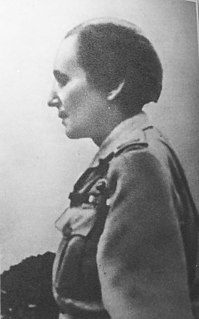 W
WMajor Wanda Gertz was a Polish woman of noble birth, who began her military career in the Polish Legion during World War I, dressed as a man, under the pseudonym of "Kazimierz 'Kazik' Żuchowicz". She subsequently served in the Ochotnicza Legia Kobiet of the Polish Armed Forces during the Polish–Soviet War. In the interwar period she became a reserve officer but faced discrimination and was stripped of her officer rank. She worked closely with Marshal Piłsudski and remained an activist in the cause of women in the military.
 W
WBrita Christina Hagberg, née Nilsdotter, alias Petter Hagberg,, was a woman who served as a soldier in the Swedish army during the Russo-Swedish War (1788–1790). She is one of two confirmed women to have been decorated for bravery in battle in Sweden before women were allowed into the military in the 20th century.
 W
WPhoebe Hessel, née Smith was best known for disguising herself as a man to serve in the British Army, probably to be with her lover, Samuel Golding. She lived to the age of 108.
 W
WMaría Martina Ibaibarriaga Elorriaga was a Spanish guerrilla leader during the Peninsular War (1807–14). A legend later grew up that she pretended to be a man, enlisted in the Spanish army, and rose to the rank of lieutenant colonel.
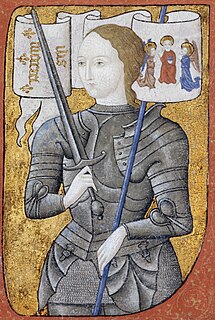 W
WJoan of Arc, nicknamed "The Maid of Orléans", is considered a heroine of France for her role during the Lancastrian phase of the Hundred Years' War, and was canonized as a Catholic saint. She was born to Jacques d'Arc and Isabelle Romée, a peasant family, at Domrémy in the Vosges of northeast France. Joan claimed to have received visions of the archangel Michael, Saint Margaret, and Saint Catherine of Alexandria instructing her to support Charles VII and recover France from English domination late in the Hundred Years' War. The as-yet-unanointed King Charles VII sent Joan to the Siege of Orléans as part of a relief army. She gained prominence after the siege was lifted only nine days later. Several additional swift victories led to Charles VII's consecration at Reims. This long-awaited event boosted French morale and paved the way for the final French victory at Castillon in 1453.
 W
WSofija Jovanović was a Serbian war heroine who fought in the Balkan Wars and First World War. She had joined the Serbian Army under the male name Sofronije Jovanović immediately upon the start of World War I and Austria's attack on Serbia. She defended Belgrade in October 1915 from the armies of Germany and Austria-Hungary. She was present at the Serbian army's retreat through Albania. She participated at the Salonika Front and the Liberation of Belgrade in November 1918.
 W
WDorothy Lawrence was an English journalist who posed as a male soldier in order to report from the front line during World War I. She managed to obtain a Khaki soldier uniform from a friend. as well as getting a false identity. However trench life affected her health, and she later revealed her gender, afraid that if she needed medical attention her true identity would be discovered and those who helped her would be punished. After revealing herself she was suspected of being a spy and was held under arrest until after the battle. She was then sent home under a strict agreement not to publish her experiences. Lawrence slowly began to lose her sanity and in the end eventually ended up dying in an insane asylum.
 W
WMária Lebstück, was a Hussar officer during the Hungarian War of Independence of 1848 and 1849 under the name Károly Lebstück. She was the first woman to have been officer of the Hussar.
 W
WAnna Lühring was a soldier in the Prussian army during the Napoleonic Wars.
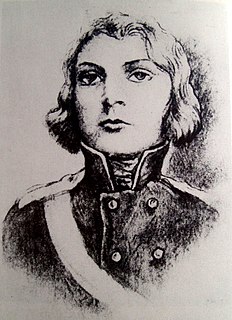 W
WMarie Christiane Eleonore Prochaska was a German woman soldier who fought in the Prussian army against Napoleon during the War of the Sixth Coalition.
 W
WAnna Henryka Pustowójtówna was a Polish activist and soldier, famed for her participation in the January Uprising.
 W
WMaria Quitéria was a Brazilian lieutenant and national heroine. She served in the Brazilian War of Independence in 1822–23 dressed as a man. She was promoted to cadet and Lieutenant and decorated with the Imperial order. She has been called "Brazilian Joan of Arc," and has become a kind of national legendary figure. Quitéria was the first woman to serve in a military unit in Brazil. She, along with Maria Felipa de Oliveira and Sister Joana Angélica (1761-1822), are known as the three Bahian women resistance fighters in the War of Independence against the Portuguese.
 W
WMary Read, also known as Mark Read, was an English pirate. She and Anne Bonny are two of the most famed female pirates of all time, and among the few women known to have been convicted of piracy during the early 18th century, at the height of the "Golden Age of Piracy".
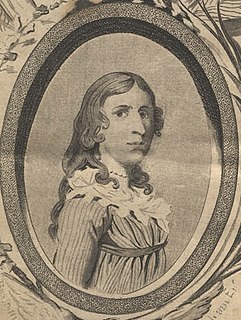 W
WDeborah Sampson Gannett, better known as Deborah Sampson, was a Massachusetts woman who disguised herself as a man in order to serve in the Continental Army during the American Revolutionary War. She is one of a small number of women with a documented record of military combat experience in that war. She served 17 months in the army under the name "Robert Shirtliff" of Uxbridge, Massachusetts, was wounded in 1782, and was honorably discharged at West Point, New York, in 1783.
 W
WMilunka Savić CMG was a Serbian war heroine who fought in the Balkan Wars and in World War I. She is the most-decorated female combatant in the entire history of warfare.
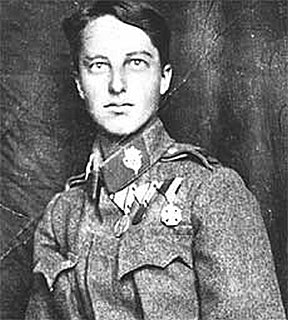 W
WViktoria Savs served in the Austro-Hungarian Army during the First World War disguised as a man. She was one of two known female soldiers on the Austrian front lines. She served with the knowledge of her superiors, but virtually unrecognized as a woman, on the Dolomite front from 1915 to 1917. After a severe injury in May 1917, she was hospitalized, and her biological sex was discovered, ending her military career. She was awarded several medals for her dedication and bravery. She was known as the "Heroine of the Drei Zinnen."
 W
WFranziska Scanagatta was an Italian woman who disguised herself as a man in order to attend an Austrian officer school in 1794. She served during the French Revolution and was promoted to Leutnant (lieutenant) in 1800. In 1801 she left the army and was granted a pension by Kaiser Franz II, when he learned of her story.
 W
WMarie Schellinck, also known as Shelling, was a Belgian soldier who fought in the French Revolution.
 W
WElisa Servenius, née Bernström, also known as Johanna Servenius, was a woman who served in the Swedish army dressed as a man during the Finnish War between Sweden and Russia 1808-1809. She was decorated for bravery in battle, and was the first and only woman in Sweden awarded the För tapperhet i fält for bravery in battle on land, while Brita Hagberg and Anna Maria Engsten were decorated for bravery at sea.
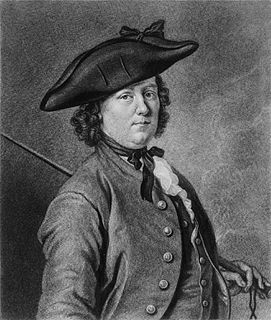 W
WHannah Snell was an 18th-century British woman who disguised herself as a man and became a soldier.
 W
WSuriyothai or Mahathewi was a royal queen consort during the 16th century Ayutthaya period of Siam. She is famous for having given up her life in the defense of her husband, King Maha Chakkraphat, in a battle during the Burmese–Siamese War (1547–1549).
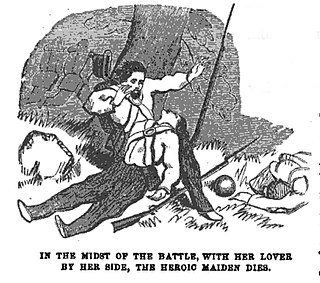 W
WSally St. Clair was an American woman from South Carolina who disguised herself as a man and joined the Continental Army. Her true gender was not discovered until after she was killed in battle during the Siege of Savannah in 1782.
 W
WMary Anne Talbot also known as John Taylor was an Englishwoman who wore male dress and became a soldier and sailor during the French Revolutionary Wars.
 W
WThao Thep Krasattri (ท้าวเทพกระษัตรี) and Thao Si Sunthon (ท้าวศรีสุนทร) were styles awarded to Than Phu Ying Chan (ท่านผู้หญิงจัน), wife of the then recently deceased governor of Mueang Thalang, Phuket Province, and her sister, Khun Muk (คุณมุก), who defended the island in the Burmese–Siamese War (1785–1786). According to popular belief, they repelled a five-week invasion by Burmese in 1785, killing male soldiers and rallying Siamese troops. They were also referred to as Chan and Mook.
 W
WLoreta Janeta Velázquez, was a woman who claimed to have masqueraded as a male Confederate soldier during the American Civil War, though her story has been brought into question by recent scholarship. The book she wrote about her experiences claims that after her soldier husband's accidental death, she enlisted in the Confederate States Army in 1861. She then fought at Bull Run, Ball's Bluff, and Fort Donelson, but was discharged when her gender was discovered while in New Orleans. Undeterred, she reenlisted and fought at Shiloh, until unmasked once more. She then became a Confederate spy, working in both male and female guises, and as a double agent also reporting to the U.S. Secret Service. She remarried three more times, being widowed in each instance. According to William C. Davis, she died in January 1923 under the name Loretta J. Beard after many years away from the public eye in a public psychiatric facility, St. Elizabeths Hospital.
 W
WMaria de Nisau née Vetulani was a Polish woman soldier, combatant for Poland's independence, and participant in the Polish-Ukrainian War and World War II.
 W
WHalszka Wasilewska, sometimes called Halina,, WW2 nom-de-guerre Krystyna, was one of the first women to attain the rank of Major in the Polish Armed Forces. She was a Legionnaire in the First world war and the subsequent Polish-Soviet War in 1920. She participated in the battle for Lwów and in the Polish - Ukrainian War. As an officer, she had special responsibility for training in the women's Polish Armed Forces during the interbellum. With the outbreak of WW2, she directed training for the women in the Polish Underground Army. She was captured and tortured by the Nazis and held in Ravensbrück concentration camp for two years. After liberation she rose to the rank of Major of the Women's forces in General Maczek's 1st Armoured Division in post-war Germany. She was the elder sister of the deeply controversial communist activist, Wanda Wasilewska who has overshadowed her in history.
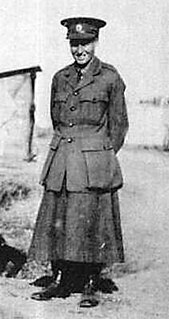 W
WLeslie Joy Whitehead, known as Josephine, Joy, or Jo, was a Canadian female soldier during the First World War. Whitehead was one of a small number of women from the western world to enter the frontlines as a combatant during World War I after she enlisted as a man in the Royal Serbian Army at the age of 22. During her time on the Balkan Front, she would go on to work as a military engineer, a guard for the Scottish Women's Hospitals, and become a prisoner of war under the Bulgarian Army following the invasion of Belgrade on October 8, 1915.